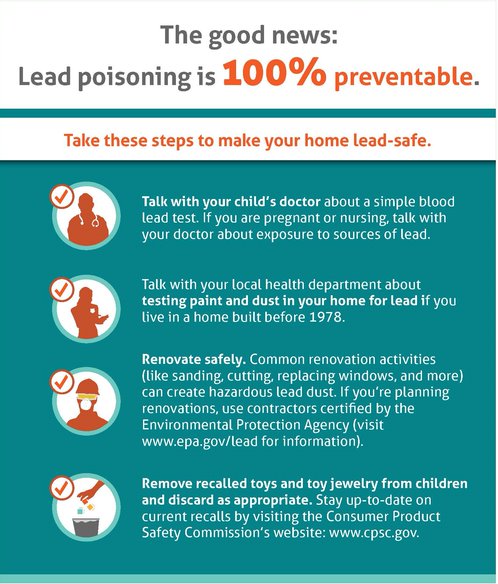The American Nurses Association (ANA) established an Environmental Health standard defined as, “The registered nurse practices in a manner that advances environmental safety and health.”[1] Review the competencies for this standard in the following box.
ANA’s Environmental Health Competencies[2]
The registered nurse:
- Creates a safe and healthy workplace and professional practice environment
- Fosters a professional environment that does not tolerate abusive, destructive, and oppressive behaviors
- Promotes evidence-based practices to create a psychologically and physically safe environment
- Assesses the environment to identify and address the impact of social determinants of health on risk factors
- Reduces environmental health risks to self, colleagues, health care consumers, and the world
- Integrates environmental health concepts in practice
- Communicates information about environmental health risks and exposure risk strategies
- Advocates for the implementation of environmental health principles in communities in which they work and live
- Incorporates technologies to promote safe practice environments
- Uses products or treatments consistent with evidence-based practice to reduce environmental threats and hazards
- Examines how the health care consumer’s biography affects their biology, resultant health issues, and the ecosystem
- Analyzes the impacts of social, political, and economic influences on the human health experience and global environment
- Advances environmental concerns and complaints through advocacy and appropriate reporting mechanisms
- Promotes sustainable global environmental health policies and conditions that focus on prevention of hazards to people and the natural environment
The environment is the air we breathe, the water we drink, the food we eat, and the places where we live, work, and play. There is a connection between the environment and the health of individuals and communities. An environmental health hazard is a substance or pathogen that has the ability to cause an adverse health event in individuals or communities. Examples of environmental hazards are air contaminants, toxic waste, radiation, disease-causing microorganisms and plants, pesticides, heavy metals, chemicals in consumer products, and extreme temperatures and weather events.[3]
Environmental health hazards can be divided into five main categories: housing, occupational, atmosphere, foodborne diseases, and waterborne diseases. View examples of environmental hazards by category in Table 18.2.
Table 18.2 Environmental Hazards
| Category | Environmental Hazards |
|---|---|
| Housing | Building Contaminants: Radon, asbestos, carbon monoxide, and lead
Personal Chemicals: Nail polish remover, spray deodorant, and rubbing alcohol Household Chemicals: Kerosene, coal or wood-burning stoves, burning pine cones or wax candles, burning incense, chlorinated water in swimming pools, cleaning products, household detergents, plastic cement, acrylic paints, furniture wax, rubber-based paints, gasoline, white-out solvents, and pesticides (used in gardening chemicals and lawn care) Electromagnetic Pollution: Electric blankets, electrically heated water beds, fluorescent lighting, cathode ray tubes (computer terminals), microwave ovens, television sets, radio or TV transmission towers, short-wave radio transmitters, and high-voltage electrical power lines Natural Contaminants: Mold and pollen Human Contaminants: Second-hand smoke |
| Occupational | Medical Chemicals: Injectable phenol (found in allergy shots) and silver amalgam (found in some dental fillings)
Occupational Chemicals: Radioactivity from direct radiation or decay from nuclear waste Construction Materials & Industry: Urea-formaldehyde foam insulation, asbestos insulation, fiberglass & particleboard, treated lumber, and silica air pollution Noise Pollution: Traffic, loud music, workplace equipment noise, and airports Ergonomics: Physical injuries due to positioning or lack of physical assistance Communicable Infectious Disease: Exposure to infections despite transmission precautions (i.e., airborne, droplet, or contact precautions). Read more about the chain of infection and transmission precautions in the “Infection” chapter of Open RN Nursing Fundamentals. |
| Atmosphere | Air pollution
Greenhouse Gasses: Carbon dioxide, methane, nitrous oxide, and fluorinated gasses Ultraviolet Radiation |
| Waterborne Illness
(Recreational or drinking water contaminated by disease-causing microbes or pathogens) |
Chemical and Metal Contaminants: Chlorine, fluorine, mercury, lead, and nitrates
Common Microbes: Cryptosporidiosis, cyclosporiasis, Escherichia, giardiasis, legionellosis, norovirus, shigellosis, blue-green algae, schistosome parasites (swimmer’s itch), pseudomonas (hot tub rash), and cholera. Read more about waterborne illness at the Wisconsin Department of Health or the Minnesota Department of Health. *Report waterborne illness to the state Department of Health. |
| Foodborne Illness
(Consuming foods or beverages contaminated with bacteria, viruses, parasites, toxins, or chemicals) |
Common Pathogens: Clostridium botulinum, listeria, campylobacter, norovirus, clostridium perfringens, cryptosporidiosis cyclosporiasis, Escherichia, giardiasis, salmonellosis, shigellosis, toxoplasmosis, yersiniosis, and hepatitis A
Read more about foodborne illness at the Wisconsin Department of Health or Minnesota Department of Health. *Report foodborne illness to the state Department of Health. |
Recognizing environmental hazards can help community health nurses provide information to community members and implement prevention strategies that promote positive outcomes. See Figure 18.1[4] for an example of prevention strategies related to the environmental hazard of lead poisoning.

Caring for individuals exposed to environmental hazards will be discussed in the following “Emergency Preparedness, Response, and Recovery” section.
Read more information about promoting environmental health and safety in nursing in the following box.
Read a free e-book titled Environmental Health in Nursing published by the Alliance of Nurses for Healthy Environments (ANHE).
Review the “Environmental Safety” section of the “Safety” chapter in Open RN Nursing Fundamentals.
- American Nurses Association. (2021). Nursing: Scope and standards of practice (4th ed.). American Nurses Association. ↵
- American Nurses Association. (2021). Nursing: Scope and standards of practice (4th ed.). American Nurses Association. ↵
- Centers for Disease Control and Prevention. (2019, January 3). Introduction to environmental public health tracking. https://www.cdc.gov/nceh/tracking/tracking-intro.html ↵
- “preventable.jpg” by unknown author for National Center for Environmental Health, Division of Environmental Health Science and Practice is in the Public Domain. ↵

